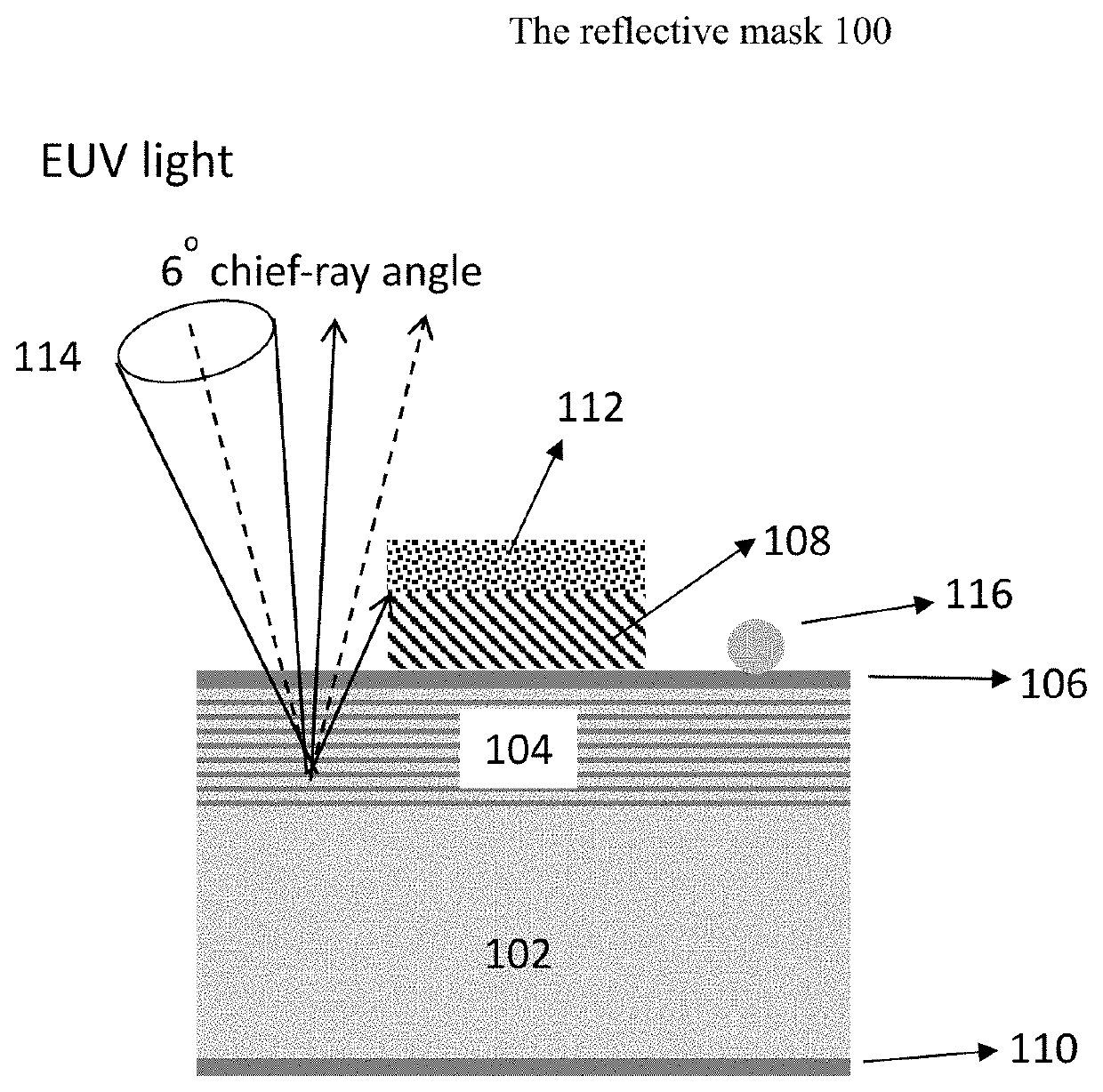Removal of contaminants from EUV masks
a technology of euv masks and contaminants, applied in the direction of detergent compounding agents, instruments, photomechanical equipment, etc., can solve the problems of mask defects, obvious critical dimension loss of tantalum (ta) based absorbers and anti-reflective coatings (arc), and spm has shown insufficient cleaning performance for removing tin from euv masks, so as to reduce or prevent substantial damage to the structural components of euv masks
- Summary
- Abstract
- Description
- Claims
- Application Information
AI Technical Summary
Benefits of technology
Problems solved by technology
Method used
Image
Examples
examples 1-6
Tin Particle Removal From Semiconductor Wafers
[0049]Aqueous based sulfonic acid cleaning compositions were prepared as shown in Table 1 below. The pH of the cleaning compositions was less than 1. Semiconductor wafers containing particles of PVD tin were provided by Triomax Technology Co., Ltd. The wafers were cut into 2.8 cm×2.8 cm size coupons. The semiconductor wafers included particles of tin as opposed to homogeneous films of tin to mimic tin on EUV photomasks after tin plasma deposition.
[0050]The tin particle containing semiconductor wafer coupons were then immersed in 100 g of the solutions (weight of water+weight of components) disclosed in Table 1 below for the time and temperature listed in Table 1. The 0.5 g 31% H2O2 was mixed with 99.5 g of the solution just prior to immersing the coupons in the cleaning solution because of the instability of the H2O2 when combined with other compounds. Each solution was then analyzed for dissolved tin ions by ICP-MS.
TABLE 1ComponentEx-1E...
examples 7-9 (comparative)
Tin Particle Removal From Semiconductor Wafers
[0051]Aqueous based sulfonic acid cleaning compositions were prepared as shown in Table 2 below. The pH of the cleaning compositions was less than 1.
[0052]The procedure for determining the amount of tin removed from tin particle containing semiconductor wafer coupons was repeated as disclosed in Examples 1-6 above except using the aqueous based sulfonic acid cleaning compositions disclosed in Table 2.
TABLE 2ComponentEx-7Ex-8Ex-9MSA (wt %)2102031% H2O2 (g / 100 g)0.50.50.5Temp ° C.606060Dipping time (min)101010Dissolved Sn (μg)0.63.418.1
[0053]The ICP-MS analysis for tin ions in the solutions of Table 2 showed a significant reduction in the amount of tin ions in the aqueous cleaning solutions in contrast to the tin ions in the solutions of Examples 1-6. The aqueous sulfonic acid cleaning compositions which included the combination of MSA and HCl showed overall significant improvement in tin removal than the aqueous cleaning compositions whic...
examples 10-13 (comparative)
Tin Particle Removal From Semiconductor Wafer
[0054]Aqueous based sulfonic acid cleaning compositions were prepared as shown in Table 3 below. The pH of the cleaning compositions was less than 1.
[0055]The procedure for determining the amount of tin removed from tin particle containing semiconductor wafer coupons was repeated as disclosed in Examples 1-6 above except using the aqueous based sulfonic acid cleaning compositions disclosed in Table 3.
TABLE 3ComponentEx-10Ex-11Ex-12Ex-13MSA (wt %)2555Citric acid (wt %)0.20.20.20.231% H2O2 (g / 100 g)0.50.512Temp ° C.60606060Dipping time (min)10101010Dissolved Sn (μg)0.60.81.23.6
[0056]Replacing HCl with the organic acid citric acid resulted in marked reduction of tin removal from the semiconductor wafer coupons in contrast to the aqueous cleaning compositions containing MSA and HCL in Examples 1-6.
PUM
 Login to View More
Login to View More Abstract
Description
Claims
Application Information
 Login to View More
Login to View More - R&D Engineer
- R&D Manager
- IP Professional
- Industry Leading Data Capabilities
- Powerful AI technology
- Patent DNA Extraction
Browse by: Latest US Patents, China's latest patents, Technical Efficacy Thesaurus, Application Domain, Technology Topic, Popular Technical Reports.
© 2024 PatSnap. All rights reserved.Legal|Privacy policy|Modern Slavery Act Transparency Statement|Sitemap|About US| Contact US: help@patsnap.com








